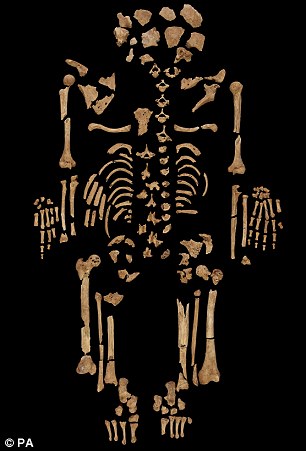 A recent study carried out by Penn state food scientists has shed even more light on green tea’s anti-cancer effects, finding that a compound within the antioxidant-rich beverage may be capable of destroying oral cancer cells while leaving healthy cells completely unharmed.
A recent study carried out by Penn state food scientists has shed even more light on green tea’s anti-cancer effects, finding that a compound within the antioxidant-rich beverage may be capable of destroying oral cancer cells while leaving healthy cells completely unharmed.
The compound responsible for many of green tea’s benefits and one which is known to protect against cancer is known as epigallocatechin-3-gallate (EGCG). The compound has been studied extensively for its ability to not only prevent and beat cancer, but also increase metabolism, protect the brain, and slow the aging process. Continue reading

 The world’s most widely-used weed killer can “probably” cause cancer (non-Hodgkin lymphoma), the World Health Organization said recently.
The world’s most widely-used weed killer can “probably” cause cancer (non-Hodgkin lymphoma), the World Health Organization said recently. Scientists believe the gases in our body can reveal a range of diseases such as colon cancer and irritable bowel syndrome.
Scientists believe the gases in our body can reveal a range of diseases such as colon cancer and irritable bowel syndrome.


 A new test can predict the survival chances of women with breast cancer by analysing images of ‘hotspots’ where the immune system is attacking the tumour.
A new test can predict the survival chances of women with breast cancer by analysing images of ‘hotspots’ where the immune system is attacking the tumour.
 If only old people would just hurry up and die — that’s the point of view for most proponents of socialized medicine around the world. Case in point is British doctor Richard Smith, who says
If only old people would just hurry up and die — that’s the point of view for most proponents of socialized medicine around the world. Case in point is British doctor Richard Smith, who says  The system for researching new cancer treatments is ‘broken’, one of Britain’s top academics has claimed.
The system for researching new cancer treatments is ‘broken’, one of Britain’s top academics has claimed. A new report shows that three of the top preventable risk factors for cancer have to do with what we eat and how often we move.
A new report shows that three of the top preventable risk factors for cancer have to do with what we eat and how often we move. An eye doctor says he’s recently seen a few 35-year-old patients whose lenses, which are typically clear all the way up until around age 40, are so cloudy they resemble 75-year-olds’. A sleep doctor says kids as young as toddlers are suffering from chronic insomnia, which in turn affects their behavior and performance at school and daycare. A scientist finds that women who work night shifts are twice as likely to develop breast cancer than those who sleep at night.
An eye doctor says he’s recently seen a few 35-year-old patients whose lenses, which are typically clear all the way up until around age 40, are so cloudy they resemble 75-year-olds’. A sleep doctor says kids as young as toddlers are suffering from chronic insomnia, which in turn affects their behavior and performance at school and daycare. A scientist finds that women who work night shifts are twice as likely to develop breast cancer than those who sleep at night. Last night (July 1st), Jamie Dimon, the chief executive of banking giant JPMorgan, told employees that he is being treated for throat cancer. In a memo, he said that he would begin eight weeks of chemotherapy and radiation treatment at Memorial Sloan Kettering Cancer Center.
Last night (July 1st), Jamie Dimon, the chief executive of banking giant JPMorgan, told employees that he is being treated for throat cancer. In a memo, he said that he would begin eight weeks of chemotherapy and radiation treatment at Memorial Sloan Kettering Cancer Center. The owners of an Elizabethtown, Kentucky cancer clinic have paid $3.7 million to settle claims that they extended the period of chemotherapy for their patients to pad their bills to the government.
The owners of an Elizabethtown, Kentucky cancer clinic have paid $3.7 million to settle claims that they extended the period of chemotherapy for their patients to pad their bills to the government. Internet discussions usually descend into abuse within a few postings. Whether this is because people these days are less polite and restrained than they used to be, or because the internet allows them to publish their first reactions without the time to cool off that older means of communication entailed, I do not know; but the fact is that those who take part in such discussions seem to confuse insult with argument and are seldom able to keep to the point for very long.
Internet discussions usually descend into abuse within a few postings. Whether this is because people these days are less polite and restrained than they used to be, or because the internet allows them to publish their first reactions without the time to cool off that older means of communication entailed, I do not know; but the fact is that those who take part in such discussions seem to confuse insult with argument and are seldom able to keep to the point for very long.